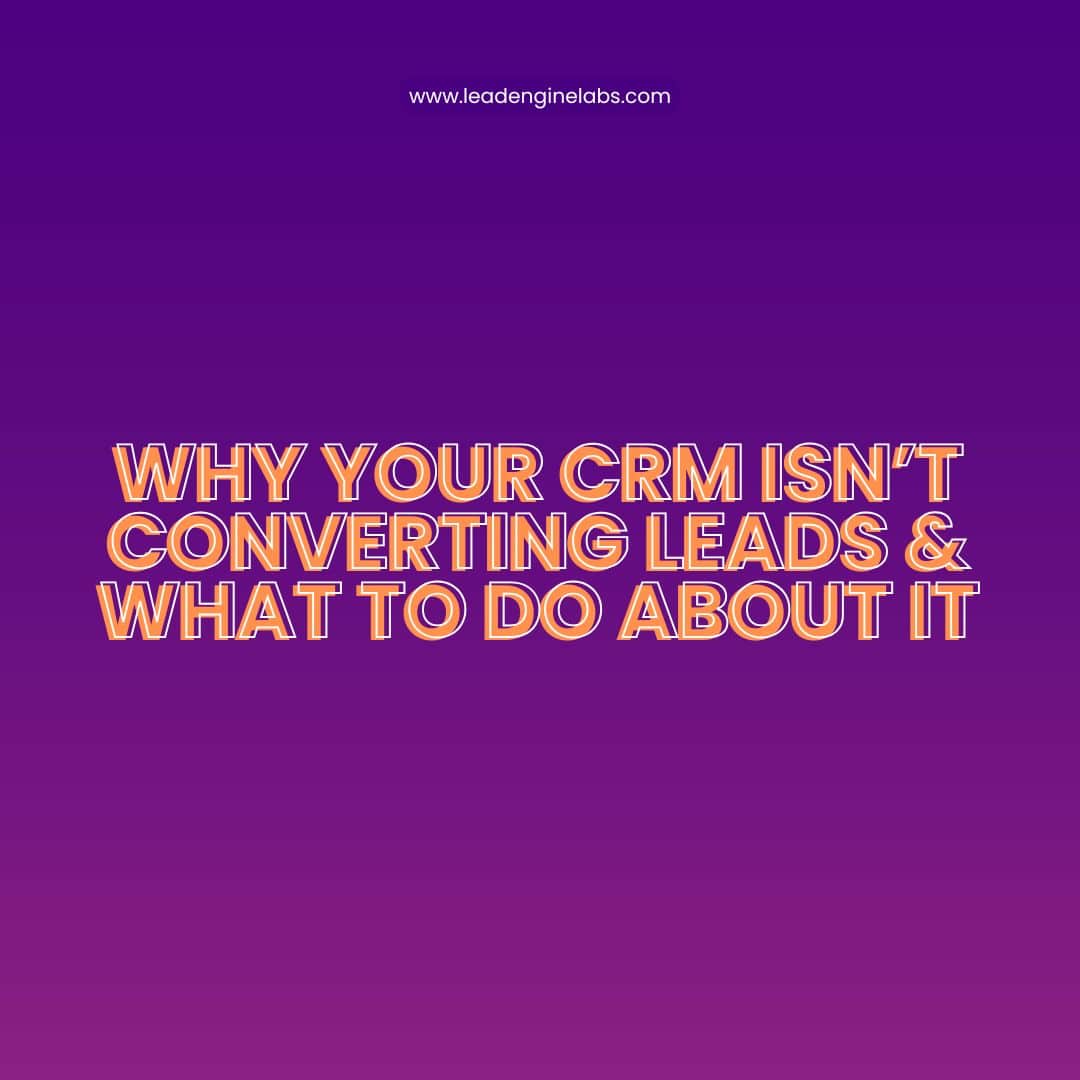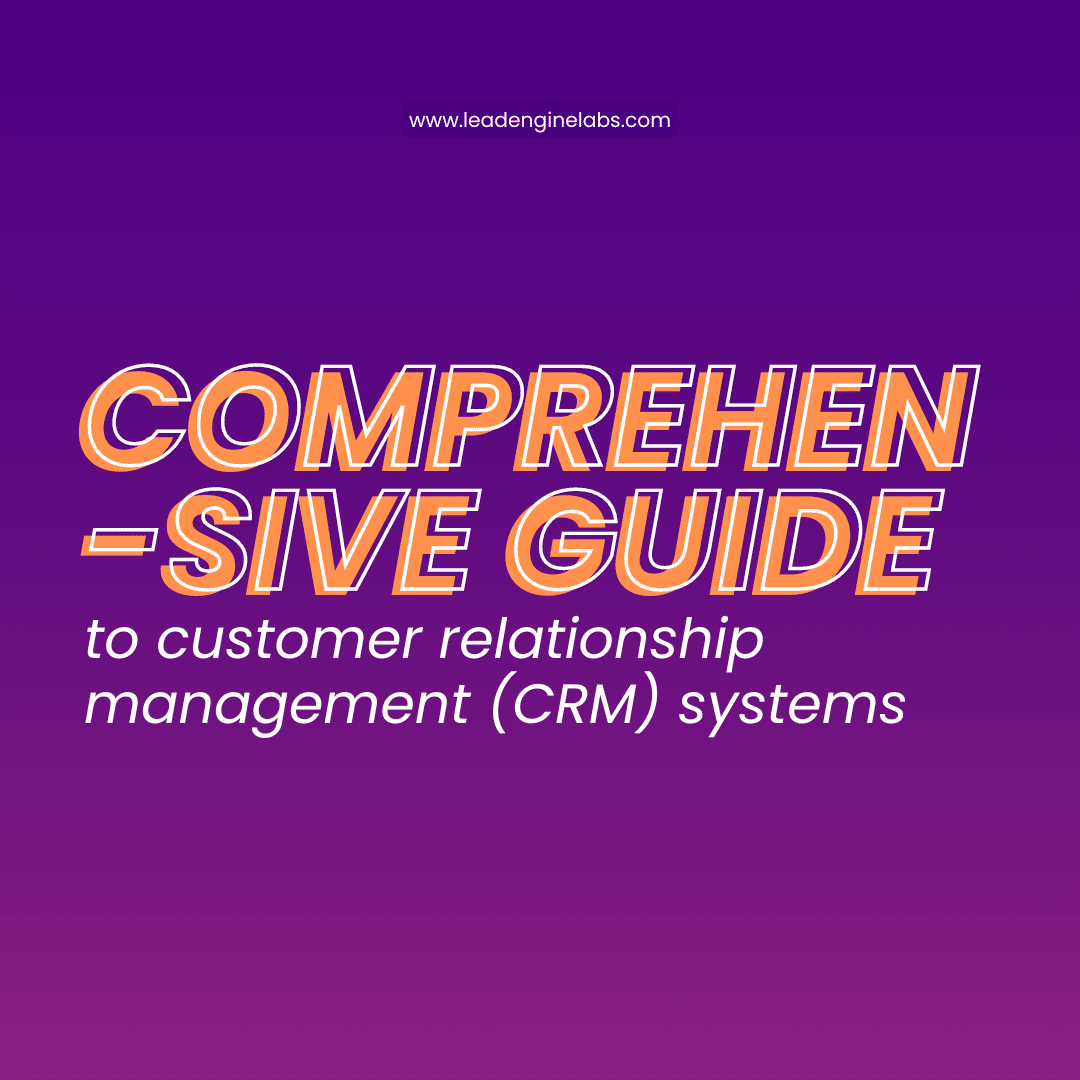You’ve invested in a CRM. You’ve built forms, set up pipelines, maybe even connected it to your website and email. But still—your leads aren’t converting.
If this sounds familiar, you’re not alone. Most businesses treat their CRM like a digital filing cabinet instead of what it should be: a revenue-generating system.
This post is about fixing that. We’re going to break down why your CRM isn’t doing what it should—and exactly how to turn it into a machine that drives conversions.
The Silent Killer of B2B Lead Generation: Why Most Funnels Leak and How to Fix Them
The Real Problem: Your CRM Is Set Up for Storage, Not Movement
Let’s be real: most CRMs are bloated, misused, and under-optimized.
What should be a sales enablement tool becomes a dumping ground for cold leads, half-completed records, and cluttered pipelines.
That’s not a lead management problem. That’s a revenue leak.
Here’s what’s usually going wrong:
- Leads sit untouched for days (or weeks).
- There’s no clear follow-up sequence after a form fill or cold reply.
- The CRM doesn’t surface the right leads at the right time.
- Sales reps are overwhelmed by bad data and miss the good ones.
Now let’s break down how to fix it.
Step 1: Audit for Lead Rot
Lead rot is when leads come in and then die quietly in your CRM without action. Happens every day in B2B.
Start by pulling a simple report:
- How many leads entered your CRM in the last 30 days?
- How many of them received a response within 10 minutes?
- How many moved to the next stage of the funnel?
You’ll probably find a large chunk just sitting there. No follow-up. No owner. No progress.
Fix it:
- Assign a default owner for every inbound lead.
- Use automation to trigger alerts within 1–5 minutes of a form submission or key behavior.
- Build views or queues that surface untouched leads daily.
No lead should enter your CRM without a path forward.
Step 2: Kill Manual Follow-Up
If your sales team is manually setting reminders to follow up—your CRM is already broken.
Automated follow-up should be non-negotiable.
Here’s what should happen automatically:
- Lead downloads a whitepaper → add to 3-touch nurture email sequence.
- Lead views pricing page twice in a day → trigger a Slack or CRM alert to a rep.
- Lead doesn’t reply to email in 3 days → auto-send follow-up #2.
Tools you can use:
- HubSpot workflows
- Salesforce + Salesloft/Outreach
- Zapier for simple workflows
- Clay for lead enrichment + automated sequences
No deal should die because someone forgot to follow up.
Step 3: Surface Buying Intent Inside the CRM
One reason your CRM isn’t converting? It’s not showing you who’s hot.
Leads should be ranked and surfaced based on:
- Email engagement (opens/clicks/replies)
- Page visits (especially pricing, case studies)
- Lead score based on fit + behavior
- Intent data (from 6sense, Bombora, etc.)
If your CRM doesn’t prioritize leads based on buying signals, your reps are guessing. And guessing costs money.
Fix it:
- Implement intent data integrations and tie them directly to your CRM views.
- Use lead scoring models that combine demographic and behavioral data.
- Set triggers: “If a lead opens 2 emails + visits a comparison page → notify the assigned rep immediately.”
CRMs should be pushing hot leads into your team’s face—not hiding them.
Step 4: Simplify the Pipeline
Bloated CRMs = paralyzed sales teams.
Most pipelines have too many stages, too many fields, and no consistency in how deals are managed.
That leads to:
- Reps gaming the system (moving deals just to keep them visible)
- Deals getting stuck in limbo
- No clear next steps
Fix it:
- Audit your pipeline stages: reduce them to what actually reflects buyer behavior.
- Standardize entry/exit criteria for each stage.
- Make sure every deal has an assigned next step with a due date.
Your pipeline should feel like a flow, not a parking lot.
Step 5: Integrate. Everything.
The reason CRMs often don’t convert? They’re disconnected from the rest of your stack.
- Your marketing platform isn’t syncing lead activity.
- Your LinkedIn outreach isn’t logged.
- Your calls aren’t tracked.
- Your email tools are siloed.
Fix it:
- Sync everything into the CRM: email, calendar, calls, forms, LinkedIn touchpoints.
- Make sure every lead’s activity is visible in one timeline.
- Use automation to tag leads based on how they were sourced and interacted.
A rep should be able to open a record and immediately understand:
- What this lead has done
- What they care about
- What to do next
Anything less is a broken workflow.
Step 6: Turn Data Into Playbooks
Most companies collect data. Very few turn it into action.
Your CRM is full of intel—closed-lost reasons, engagement data, conversion timelines—but nobody’s using it.
Fix it:
- Identify your highest-converting lead sources and double down.
- Build playbooks based on top-performing sequences and reps.
- Review closed-lost reasons monthly and fix upstream issues.
If your CRM isn’t informing strategy, it’s just storage.
Conclusion: A CRM That Doesn’t Convert Is a Liability
Your CRM is either making you money—or costing you opportunities.
It’s not about the tool. It’s about how you use it.
Fix the rot. Automate the follow-up. Prioritize the right leads. Sync your stack. Use your data.
At Lead Engine Labs, we help B2B companies turn their CRMs into high-conversion machines that actually drive pipeline.
If you’re sitting on leads that aren’t moving, you’re sitting on lost revenue.
[Let’s fix your CRM.]


